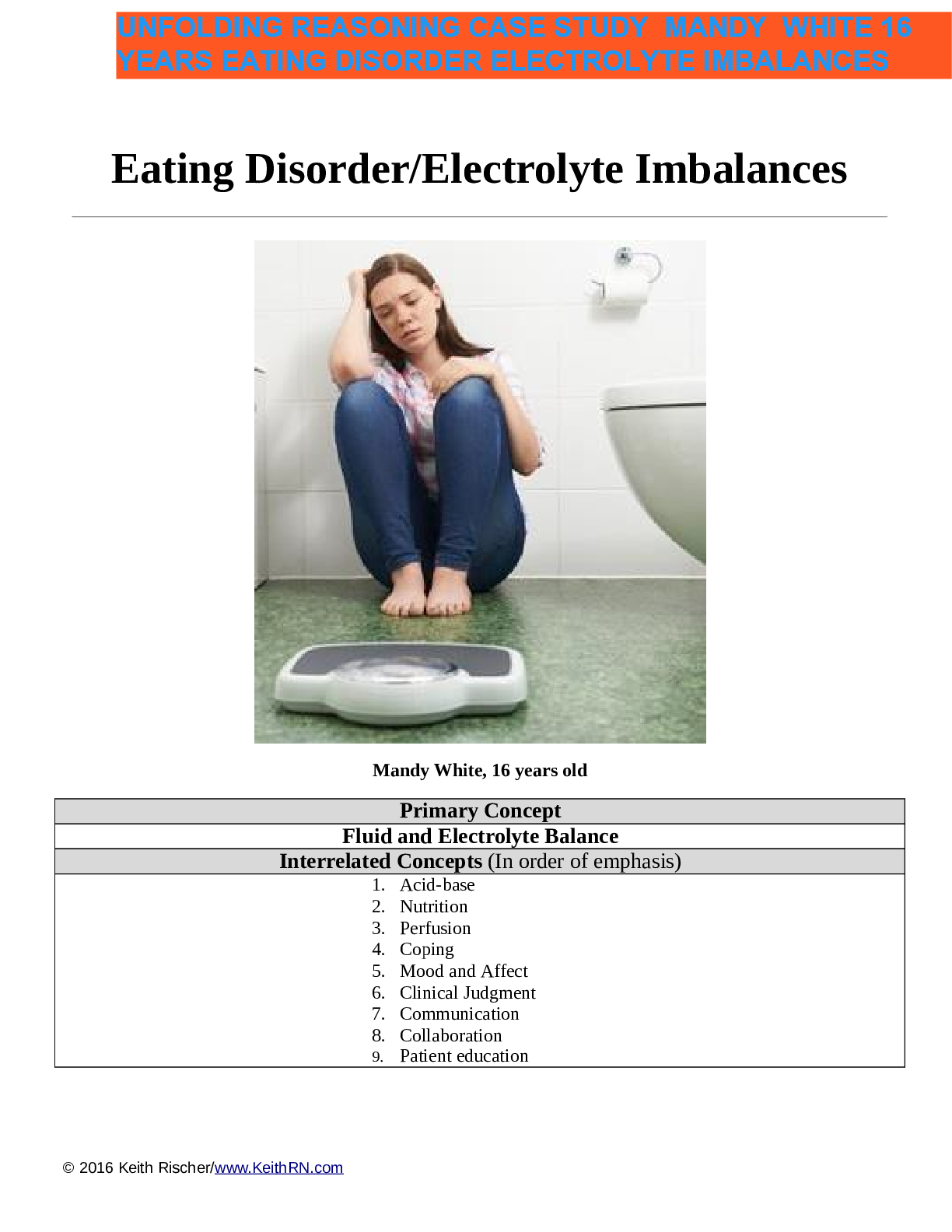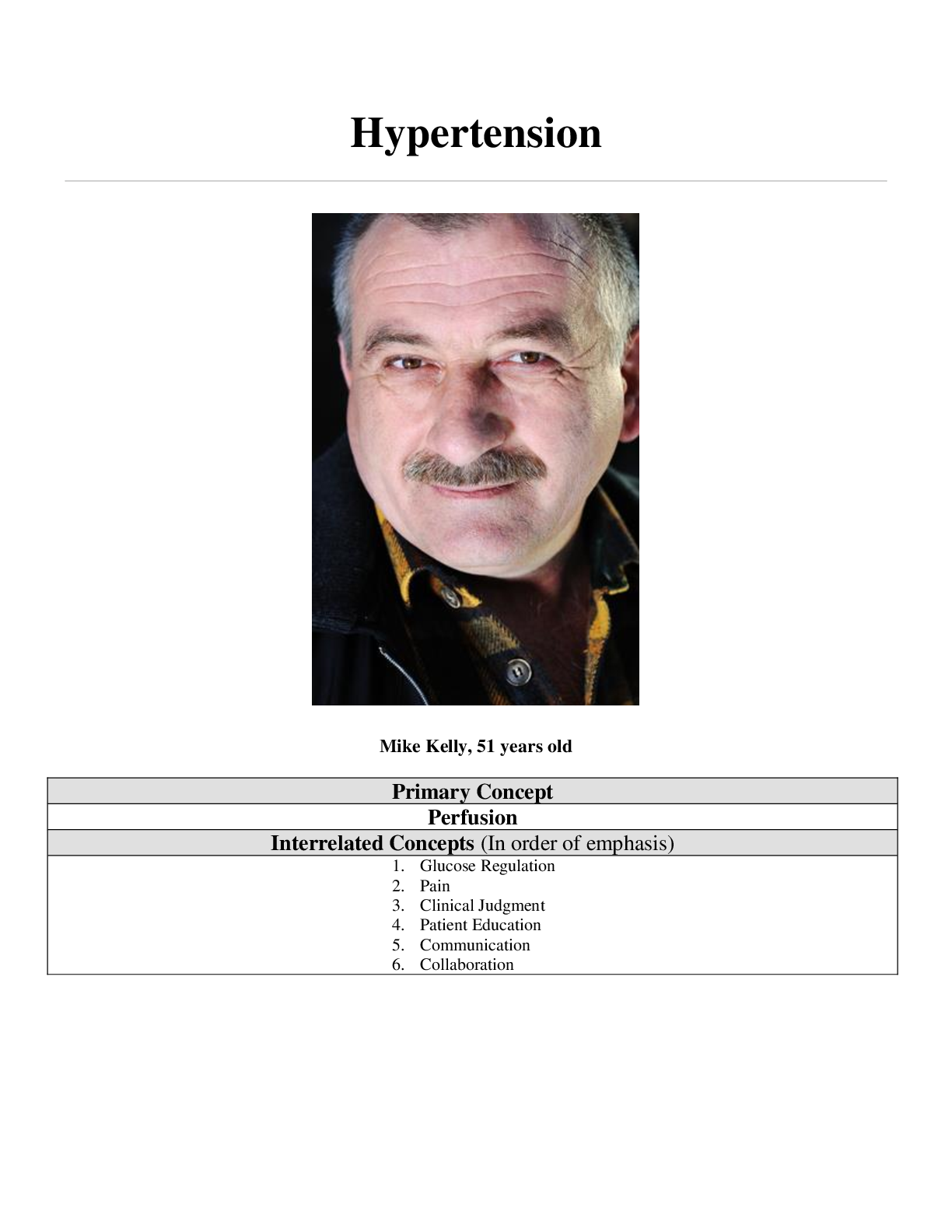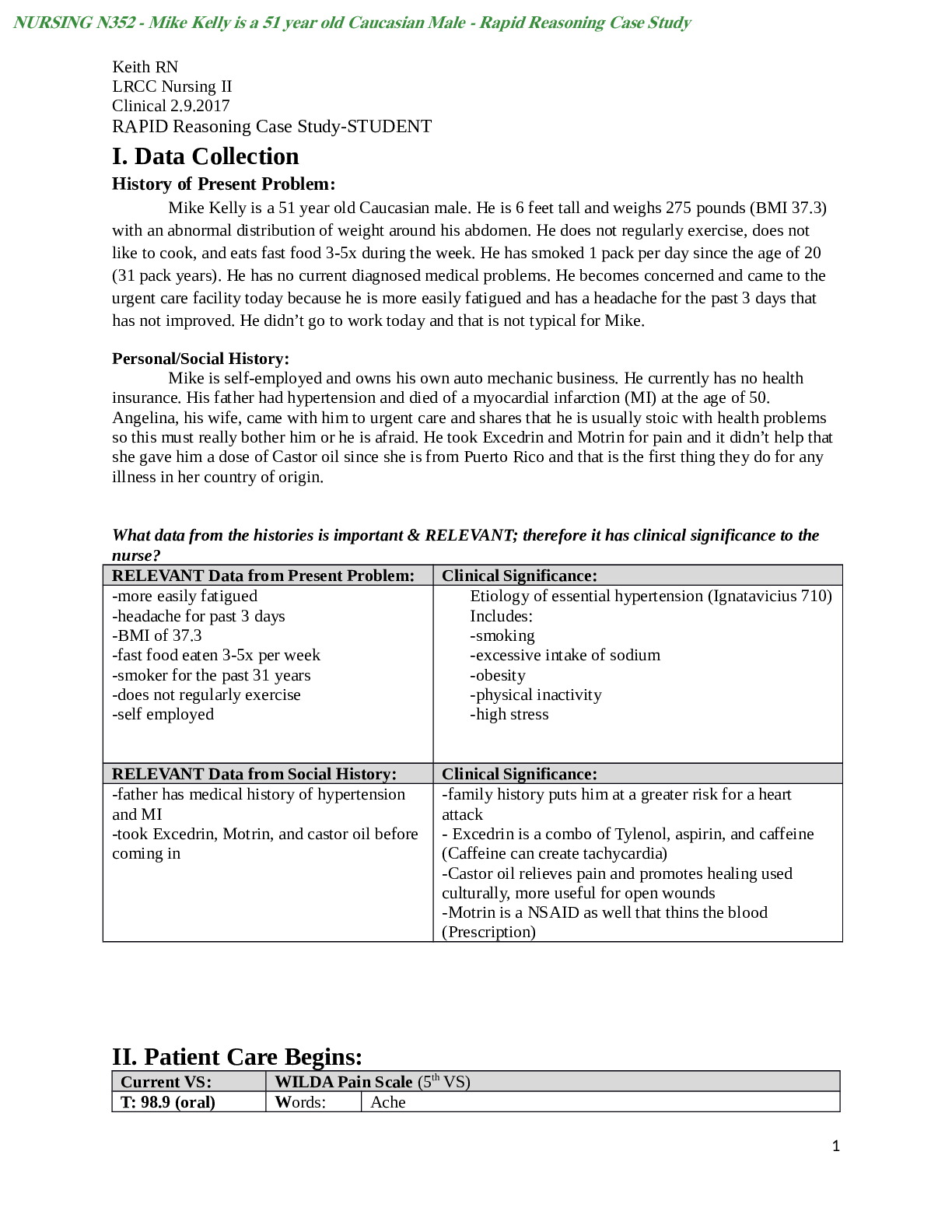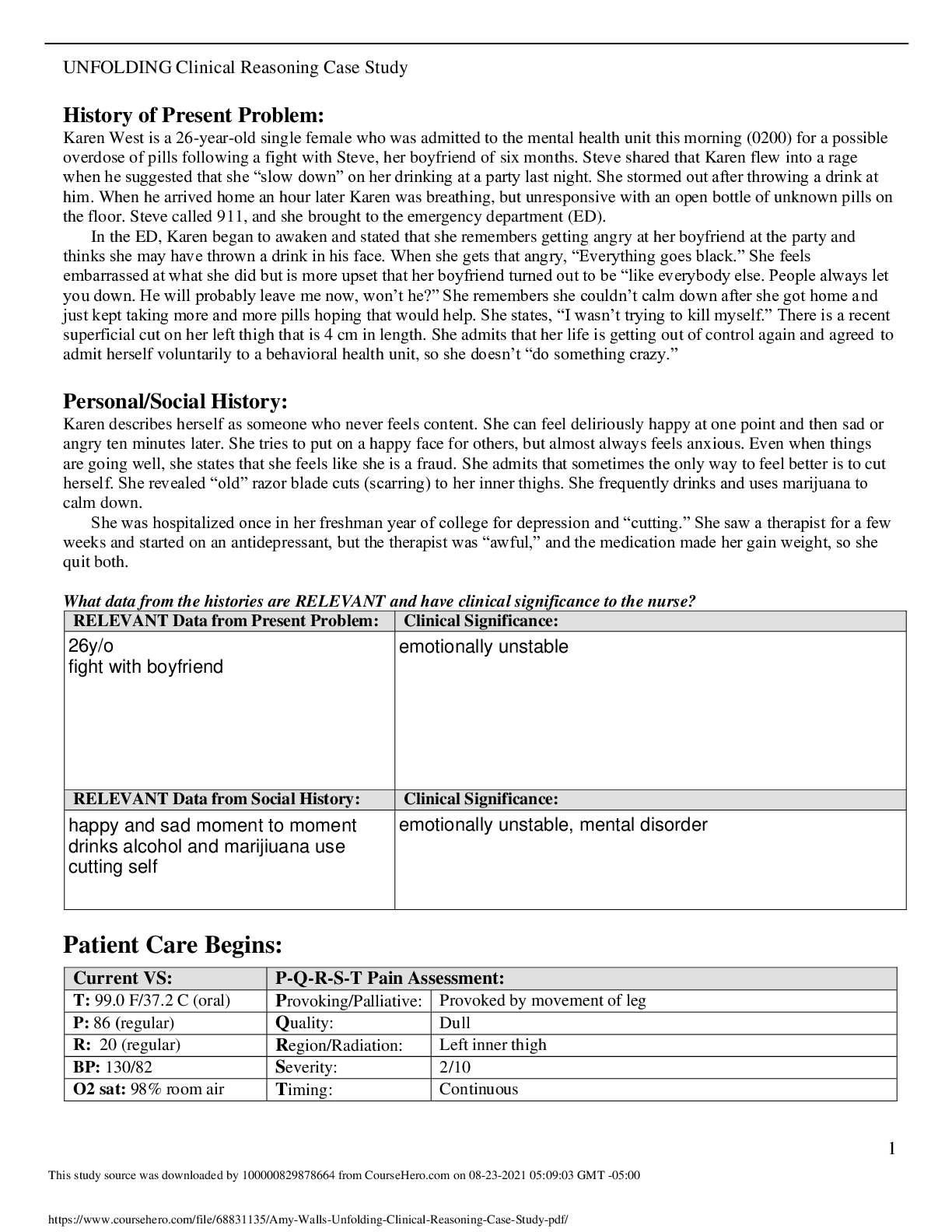Chemistry > CASE STUDY > Rate of Reation of Calcium Carbonate and HCl (All)
Rate of Reation of Calcium Carbonate and HCl
Document Content and Description Below
Rate of Reation of Calcium Carbonate and HCl Purpose: This lab was completed to find the rate of reaction of hydrochloric acid with calcium carbonate, to examine the effects of amount of reactant a... nd concentration on rate of reaction between HCl and CaCO3, and to examine different methods of determining rate of reaction. Background: The rate of reaction is defined as how fast or slow a reaction takes place; for the purposes of this lab, this is essentially equivalent to how quickly reactants are consumed. According to collision theory, reactions occur at different rates because of the amount of collisions between reactants with the correct orientation and energy to occur. Reactants must collide to react, and if they do not collide in the right direction, the particles which must react will not come into contact with one another; in addition, if they do not have enough energy, the particles will not be able to react with one another. Number of effective collisions can be changed through a number of factors, including temperature, pressure, and concentration of reactant. In this lab, concentration of reactant and amount of reactant were examined for their effect on the rate of reaction. Hypothesis: Increase in concentration will speed up a reaction, and increase in amount of reactant will speed up a reaction. The order of HCl will be one, and the order of CaCO3 will be one. Materials: ❑ Calcium carbonate (marble chips and powder) ❑ Hydrochloric acid (6 M, 4 M, 2 M, & 1 M) ❑ Silicon grease ❑ Lab aprons ❑ Goggles ❑ Distilled water ❑ Balance ❑ 2 Erlenmeyer flasks ❑ Single buret clamp ❑ Test tube ❑ 2 100 mL beakers ❑ Syringe ❑ Syringe adapter ❑ Stopcock ❑ Stopper, one-hole (must fit flask) ❑ Graduated cylinders ❑ Mortar and pestle ❑ Support stand ❑ Timer (can be stopwatch or phone) ❑ Hot plate ❑ Thermometer ❑ Scoopula ❑ Filter paper Procedure: Collection of Gas in a Syringe 1. Measure out about 0.50 g of calcium carbonate (about 3 marble chips. Make sure that the scale is zeroed before weighing. Place the marble chips in the erlenmeyer flask 2. Lubricate the black tip of the syringe using the silicon grease. Do not put any directly on the top, but only on the sides. 3. Measure 10 mL of 6 M HCl in a graduated cylinder. 4. Before adding the acid, attach the syringe adapter and stopper to the syringe and secure .........................................................................continued............................................................................ [Show More]
Last updated: 2 years ago
Preview 1 out of 15 pages

Buy this document to get the full access instantly
Instant Download Access after purchase
Buy NowInstant download
We Accept:

Reviews( 0 )
$11.50
Can't find what you want? Try our AI powered Search
Document information
Connected school, study & course
About the document
Uploaded On
Aug 23, 2021
Number of pages
15
Written in
Additional information
This document has been written for:
Uploaded
Aug 23, 2021
Downloads
0
Views
174













